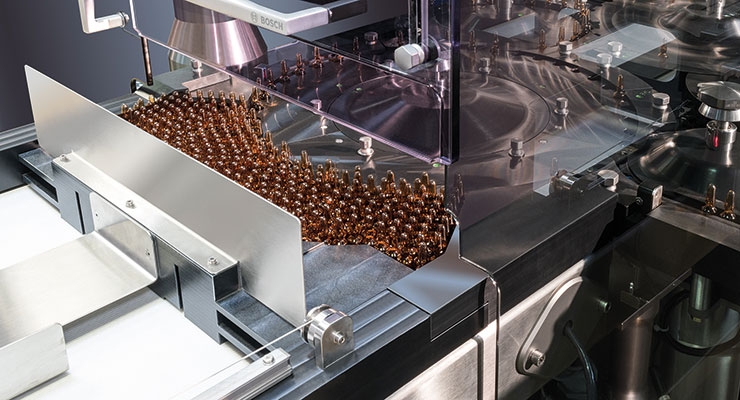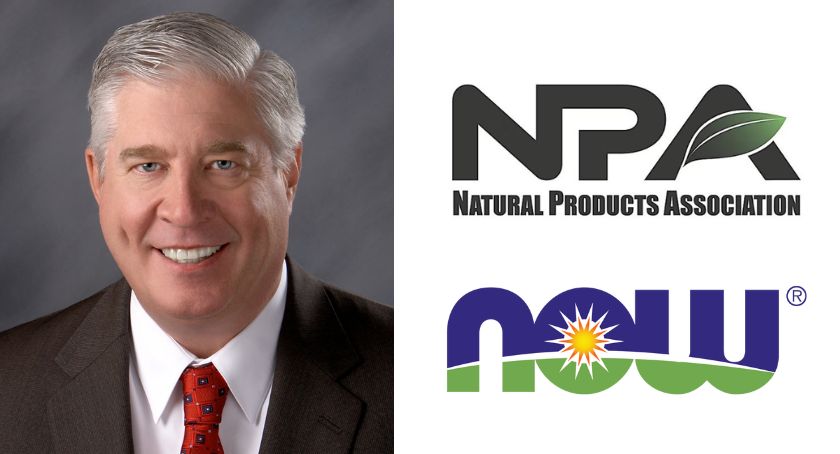Features
Packaging Equipment Close-Up
To meet the wide-ranging needs of the marketplace, suppliers and contract packagers are looking to deliver flexible solutions.

Today’s medicines require the utmost flexibility. Pharmaceutical packaging equipment must accommodate everything from large-scale generics to small-scale personalized medicines, and in some cases, on the same line. Pharma and biopharma trends such as smaller batch sizes, cytotoxic compounds, patient compliance and serialization are among the key factors influencing equipment designs. The most sought after solutions incorporate reduced changeover times, safety and automation, and broader processing capabilities with machines that are scalable in functionality and output.
Equipment suppliers and contract packagers provide their insight into the latest capabilities, customer needs, advances with serialization and what to expect from packaging equipment down the road.
Pharma & Biopharma Trends
As drug products change, so do equipment requirements. Essentially, it’s diversity that matters, from cold-chain to compliance packaging. To meet these wide-ranging needs, equipment suppliers must constantly innovate. According to Ralf Klotz, sales manager for Uhlmann Packaging Systems, “There is a trend toward high value, expensive treatments. This means very specific packaging requirements for each product. The batch sizes are smaller and line changes are much more frequent. Customers are demanding flexibility in design to reduce changeover times, increase efficiencies and reduce the total cost of ownership.”
MG America, through its partner Steriline, based in Como, Italy, continues to experience increased demands for equipment flexibility, ease of use and safety in terms of equipment design and sterility assurance. Randy Fraatz, business development manager for MG America, commented on demands in the fill/finish space, saying, “This equipment requires precise engineering and very tight control limits (tolerance). Designing and providing equipment consistent with these principles, while implementing automated and intuitive machine adjustments, allows customers to increase their utilization of machinery across a broader spectrum.” According to Mr. Fraatz, this could mean being able to process a wider range and variety of containers on a single piece of equipment, or reducing the machinery changeover and preparation to process multiple products across a single machinery platform.
With respect to sterile fill/finish and parenteral packaging, demand for equipment minimizing human intervention throughout the process continues to grow. According to Mr. Fraatz, “Changing the role of operators and technicians in the process by implementing isolator systems versus conventional guarding solutions or even Restricted Access Barrier Systems (RABS) solutions, improves the sterility assurance levels based on higher quality sterilization procedures and by limiting the need and possibility for operators to perform tasks that can introduce contamination.”
On the contract packaging side, Reid Lederer, president of Pharma Packaging Solutions, noted trends he is seeing. “Certainly, serialization is a top-of-mind topic for everyone right now. There is an interest in aggregation—tying a vial or a bottle unit of use to a pallet, for example. We also see more interest in cold chain systems and we recently doubled our capacity there. Processing vials and parenteral packaging in a clean room environment is also a growing trend. Additionally, customer requests for small to mid-size runs are on the upswing, as are requests from international pharma companies seeking to break down bulk into packaged units for use by American consumers.”
Product packaging is also an important element of pharmaceutical marketing needs. Charles Ravalli, national sales manager for Romaco North America, said, “Both the rise of generics and emerging markets are urging pharmaceutical manufacturers to stand out with their products and formulations. Many invest heavily in niche products to sharpen their portfolio. Packaging is considered a very strong marketing tool, especially when it comes to over-the-counter (OTC) products. Above all, the design of the primary packaging (e.g., blisters, strips) is steadily gaining more importance. At this stage, innovative engineering solutions are required more than ever.”
Additionally, packaging has evolved to address everything from patient-centric designs to increasing shelf life. With products designed for specific indications, compliance packaging is continuing to develop. Mr. Klotz at Uhlmann said, “Initially, compliance packaging was for child resistance, but now it is trending toward patient compliance as well. Daily, weekly, monthly and titration kits specific to the product and regimental requirements are growing. We are also seeing trends toward extending stability and shelf life by using materials with high barrier capabilities and supplementing this with oxygen scavengers and nitrogen purging systems to minimize overall oxygen content.” Undoubtedly, packaging has evolved from simpler origins into an impressive multidimensional tool for pharma business, safety and patient use.
Capabilities & Complexities
Flexibility is the main component driving equipment designs. The latest capabilities include single platform machines capable of handling numerous packaging types with quick changeover, as well as incorporating appropriate track and trace solutions and IT upgrades. Chris Siegele, serialization specialist for Omega Design Corp. noted, “Vendors are being asked to build more custom equipment that meets increasingly specific requirements.”
As far as primary packaging of liquid dosage forms is concerned, manufacturers of pre-sterilized glass packaging are making an important contribution to new developments and ease of use. According to Christian Treitel, head of pharma business development at Bosch Packaging Technology, “While pre-sterilized syringes have been in the market for many years, some manufacturers have now started the production and development of pre-sterilized, ready-to-fill vials and cartridges. Since the preparatory steps for these pre-sterilized containers have already been carried out by the supplier, purchasing upstream machines for loading and washing, or sterilization and depyrogenation, is no longer necessary. New machine developments, such as the FXS Combi from Bosch, make it possible to fill and close all three packaging types on one single platform.”
The most crucial characteristics for secondary packaging are safety, speed and reliability. Mr. Treitel noted, “The main challenge lies in quick changes between different products and product combinations. This is why the horizontal cartoning machines from Bosch are based on a universal platform. Customers are able to safely package the required amount and combination of products into different carton sizes using the same machine.” This can include primary packaging such as bottles, vials, syringes, ampoules, tubes, blisters and trays, as well as bags, stick packs and sachets.
“Apart from exchangeable closing variations for each secondary packaging type, such machines offer numerous possibilities for expansion or upgrades, including end-of-line serialization, aggregation and tamper-evident modules complying with current regulations and safety standards,” Mr. Treitel added.
While significant advances have been made, certain challenges remain. Container handling and transport, along with the multitude of size parts and the changeover associated with these size parts have long been a challenge and source of frustration for end-users of fill/finish equipment, according to Mr. Fraatz at MG America. “At Steriline this issue is being addressed through the release and continued expansion of robotics for the various operations in the fill/finish and downstream handling process. This includes the delivery of the first Robotic Syringe Filling/Stoppering Machines (model RSFM), the current production of the first made-to-order Robotic Vial Filling/Capping Machines (model RVFCM) and the release and delivery of the first Robotic Tray Loader (model RTL), which has the following functions: vial loading, tray loading, tray moving and tray discharge—with an output speed of up to 720 vials/minute.”
Offering a contract packaging perspective, Joe Luke, vice president of sales and marketing for Reed-Lane, said, “Faster changeover with repeatable set-up capabilities is more important to Reed-Lane as a contract packager than flat-out run speed. This is because we very rarely dedicate a line for a specific product; our business is based on flexibility and consistency. We’re also looking for equipment that is designed to enhance cleanup and with tooling requirements that are more economical than previous equipment designs.”
Changing Packaging Needs
Advances in biopharmaceutical medicines have grown considerably in recent years, requiring solutions with the utmost precision. Many are packaged in small batches, are highly potent or cytotoxic requiring protection for handlers, and are sensitive to force and temperature, in addition to the materials being quite costly.
“Drug delivery systems and packaging have evolved massively from oral tablets, a syringe, or a transdermal patch, to many different formats of delivery systems from buccal and oral thin-film dissolvable applications to single-unit syringes with a safety needle for at-home use,” said Bob Macadangdang, client development and relationship manager at Sharp Packaging Solutions. “Sharp’s packaging lines have evolved to handle projects such as micro-dose powder filling into cartridges and different biologic applications for specific therapeutic categories such as vials and auto injector pens.”
New analysis from the Personalized Medicine Coalition (PMC) reported an upward trend in the number of personalized medicine approvals at FDA, accounting for more than 1 in 4 novel new drugs (NNDs) approved in 2015. The analysis, titled “2015 Progress Report: Personalized Medicine at FDA,” lists the 13 personalized medicines approved in 2015, which represent 28% of the 45 NNDs the agency approved overall.
Sieghard Schuchmann, managing director at OPTIMA Pharma, said, “Because processing these medications presents many new challenges to the packaging process, we must offer solutions. Biopharma creates strong demand for new machines. In the coming years, we are expecting further opportunities for growth through the increase of self-medication and in the area of personalized medicine. This is because all of these areas require specific and partly redeveloped technologies.”
As such, having several technical innovations to meet the varied requirements of biologics, such as minimized product loss, isolators with reduced cycle time and new methods for lyophilization, is key. Mr. Schuchmann noted this requires identifying the technical details and applying them to modular machine platforms. These machines are scalable in their functionality and their output, meaning that from the lab scale up to high-performance production, all applications are covered with flexibility.”
As a full service CMO, flexibility and reliability are paramount in equipment selection. According to Justin Schroeder, executive director of marketing, business development and design at PCI Pharma Services, “The nature of our business demands agility and redeploying assets efficiently. We also look to offer our clients equipment that is truly best-in-class. The needs of ethical medicines and OTC medicines can be divergent, so we are very focused on selecting the most robust technologies for our operations.”
Serialization Solutions
Equipment suppliers have developed numerous serialization solutions, leveraging tamper evident labeling, hologram features, inspection stations and data-matrix codes, to name a few. While various technologies are available to execute serialization, without finalized regulations, the challenge lies in what to do with the data. According to Mr. Ravalli at Romaco, “All parties involved await the legal regulations for the pharmaceutical supply chain that are not finalized. The crucial question will be how to organize the large data pools beyond national borders. This challenge is global, as is the potential threat of counterfeit pharmaceuticals.”
According to Mr. Schuchmann at Optima, “Serialization using data-matrix codes, for instance, is technically unproblematic in current pharmaceutical systems. The actual challenge, or ‘know-how,’ lies in data storage and in data management in particular. The exact requirements, which differ from market to market, will reside in the provisions. For example, the EU Falsified Medicines Directive will soon change the infrastructure required by manufacturing all the way to the pharmacy.” The detailed provisions are expected in the first quarter of 2016, after which an implementation period of three years is planned.
With regulatory deadlines fast approaching, many companies have already implemented and launched serialization ahead of finalized regulations. Contract service providers offer input on their efforts and experiences. Mr. Luke at Reed-Lane said, “Serialization is definitely impacting our equipment requirements. We are investing heavily in the infrastructure to apply serialized data to packages and manage all serialized data. We are seeing related upgrades required in equipment to implement serialized operations. For example, we’ve identified upgrades in labeling equipment to allow us to effectively print and commission serialized data.”
Reed-Lane has validated a flexible dedicated suite for carton serialization, and has begun the process of serializing several bottle lines in 2016. “We commenced the integration with our Level 4 provider in the fourth quarter of 2015 to be able to manage and exchange the serialized data with our customers and other partners. We’ll also have the ability to generate serial numbers,” Mr. Luke added.
Mr. Macadangdang at Sharp said, “Because we have been at this since 2007, we have been able to standardize an approach to serialization. We have worked with SAP, Oracle and other key vendors serving this area, which provides an immediate level of comfort for clients. Currently we are supporting U.S., European and Asian customers with serialization on 18+ active lines running 50+ projects ranging from large pharma/biopharma to virtual companies. We can provide up to five levels of aggregation, from printing on the individual blister cavity through the final shipping pallet.”
According to Mr. Schroeder at PCI, “A growing proportion of our clients are initiating serialization programs in earnest, with some undertaking active serialization in advance of the U.S. and EU requirements. We are also supporting active serialization for emerging market countries, which can have wide-ranging, country-specific requirements. In the past 18 months, PCI has tripled its serialization capacity and we anticipate these investments will continue for several years into the future as the industry requirements take root.”
He added, “One key technology we have invested in is our FlexSuite Serialization lines that allow for standalone serialization with flexible technologies. For example, with snap changeover we can accommodate packages as small as a matchbox and as large as a shoebox. We are employing this technology at our sites to support both the serialization of products that we package, as well as a finishing solution for clients with prepackaged medicines simply looking to add serialized codes.”
Packaging Equipment Expectations
For suppliers, technology and support services will increasingly dominate the realm of packaging equipment. Likewise, comprehensive and flexible packaging solutions will continue to drive demand in the foreseeable future.
“As equipment automation develops and becomes more integrated into the information technology structure of individual facilities and larger conglomerates, the demand will continue to grow for service/support strategies that require experienced software and automation engineers/technicians,” said Mr. Fraatz of MG America. “This includes knowledge and familiarity with the changes in machine and line level systems, as well as plant and even enterprise level architecture such as manufacturing/serialization execution (M/SES) systems and enterprise resource planning (ERP) systems.”
Mr. Schuchmann at Optima added, “The technical diversity in machine building is growing in the same way that the development of biopharmaceuticals is progressing. If we also think about new areas such as personalized medicine and self-medication, which in our opinion will grow equally significantly, this leads to even more technical diversity.”
According to Mr. Treitel at Bosch, “Many companies have already invested years of effort to develop their pharmaceutical products. They require an equipment solution that supports a fast time-to-market, while preserving the quality of their products. Whether they need a line for the production and packaging of oncology drugs, treatments for diabetes or gastric ulcers, or a solution for eye drops or cough syrup, they will be looking for complete concepts that exactly match the requirements of their specific products.”
Staying ahead of the game is essential—in terms of pharma and biopharma trends, technology and regulations—whether providing companies with the equipment or the contract packaging services they require. This involves intuitive equipment designs and business forethought, as well as client support.
Kristin Brooks is the associate editor of Contract Pharma. She can be reached at kbrooks@rodmanmedia.com.




















